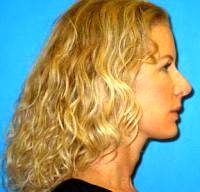Plastic Surgeons Opinions: Mini Facelift Vs Facelift
A Mini Facelift is usually a skin only facelift with minimal undermining and is useful only in highly selected patients which are younger and may have just some slight skin laxity. If you use it for more, it usually gets you a “mini result” as well.
It may only last 1 or 2 years at best. In contrast, a full facelift is the real deal and involves both wide skin elevation and deep SMAS layer elevation. I perform a component facelift based on the individual aesthetic analysis of the persons face – a true stylized facelift.
A full facelift usually also means you perform eyelid surgery (blepharoplasty) and in some cases a browlift to elevate the eyebrows as well. This type of facelift can last 7 to 10 years and looks natural if done well. (Rod J. Rohrich, MD, Dallas Plastic Surgeon)
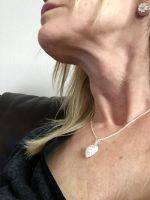
A Full Facelift Is More Expensive
Mini-facelifts are good for patients with minimal laxity. A full facelift is reserved for patients with laxity that includes significant jowling, cheek fat pad descent, and significant skin laxity in the face and the neck.
If mini-lifts are offered to patient that require a full facelift, they usually get a “mini” result. They always are more appealing but not always satisfying for the patient after surgery if used on poor candidates. (Steven Wallach, MD, New York Plastic Surgeon)
Mini vs. full facelift
Nomenclature for procedures are not specific. One surgeon’s mini may not be the same as another’s. The procedure should match your anatomy and your goals. Whatever it takes to get you what you want is what will need to be done.
You can call it whatever you want and the surgeon can charge whatever he wants. The important thing is to determine what is going to make you happy. Ask your surgeon to describe what that would require.

Full Facelift Candidate
You can modify the surgery and the subsequent cost to fit your situation. One surgeon’s “minilift” may be more expensive than another surgeon’s”full lift”. Doing a less expensive surgery that doesn’t get you what you want will cost you more in the long run and won’t make you happy.
Tailor your surgery to your anatomy and desires. (Robin T.W. Yuan, MD, Beverly Hills Plastic Surgeon)
There are many promotions for alternatives to facelift cosmetic surgery: mini lifts, mini tuck facelifts, thread lifts, string lifts, and weekend lifts. While each of these may have a unique approach to lifting sagging skin, the bottom line is that these procedures act as baby steps.
Minimal surgery will give you minimal results. Even if a mini-lift won’t give you the dramatic results, getting one may be right for you if you’re not quite ready for a facelift; these facelift alternatives offer an introduction toward the full plastic surgery process.

Full Facelift Is A Surgical Procedure That Aims To Correct Age-related Imperfections Of The Mid To Lower Face
You can recovery quickly and it allows you to test the waters and see if you like the difference. Keep in mind, the important thing is the end result, and not whether or not you’re going to have two day recovery, or a two week recovery.
But you can’t have both, you can’t have a two day recovery on a full face and neck lift. For a full facelift you need a good two weeks of recovery. (William Portuese, MD, Seattle Facial Plastic Surgeon)
Mini lifts are used to moderately tighten the jawline and neck when the looseness isn’t too bad and can be done under local anesthesia for roughly $6-8500. Full facelifts do the same but also tightens the mid face area and does more tightening and bigger areas and is usually done under general anesthesia for $15-25,000.
Liposuction may or may not be part of both procedures. Regardless of whichever a patient needs, they also need a chemical peel ($750-1500) as well and also fillers ($550-650 per syringe) and/or botox ($300-750) as ancillary procedures to polish off the results.

Full Facelift Pros And Cons
Then comes the maintenance creams etc… (David Hansen, MD, Beverly Hills Dermatologic Surgeon)
A true mini-lift should not be a limited lift, but should focus primarily on the mid-face and jawline. The appropriate patient for a mini-lift has sagging cheeks and jowls with loss of definition along the jawline.
In general, the neck is still tight and does not have any banding. These patients are generally younger, but wish to correct the sagging that tends to create a more squared-off face. A full facelift is appropriate for someone who has all of the above features plus loose skin and muscle bands on the neck.
In this case, more surgery is required to provide neck tightening and contour. Performing a mini-lift on this type of patient would leave someone who had an imbalance between the face and neck; a rejuvenated face with a sagging aged neck.
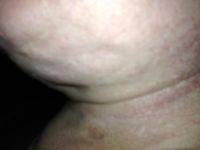
Full Facelift Results May Be More Satisfying Because The Skin, Tissue, And Muscle Is Accessed And Moved To A Greater Extent
If someone offers you a minilift, make sure it is more than just an S-lift or limited lift. It should be a multi-layered lift that provides a lasting result. (Edgar Franklin Fincher, MD, PhD, Beverly Hills Dermatologic Surgeon)
The line between “mini” and “full” lower Facelifts in a blurry one. No two surgeons perform a Mini facelift the same way, and no two perform full lower facelifts the sam way either. As a matter of fact, the line is so indistinct, there are probably surgeons whose “mini” facelifts are more thorough and longlasting than other surgeons’ “full” lower facelifts.
Rather than focus on the mini or full lower Facelift terminology, ask your surgeon, directly, what he expects will improve (and what won’t improve) in each case, what their respective downtimes/recoveries/longevities will be, and then choose the procedure that best fits your needs and expectations. (Laxmeesh Mike Nayak, MD, Saint Louis Facial Plastic Surgeon)
Minilift versus facelift often can have similar improvement
The definition of a minilift varies from surgeon to surgeon and some minilifts are similar to what other surgeons do as a complete facelift. Traditionally a facelift involves more extensive elevation and undermining of the skin and soft tissues of the face with lifting and tightening of the underlying muscles and soft tissues and removal of the excess skin.
It usually encompasses improvement of the temple and midface regions. A minilift on the other hand is just a less extensive elevation of the above at least in my terminology. The incisions are similar and the healing process is somewhat faster for a minilift.
I still perform some muscle and soft tissue elevation with skin removal similar to a complete facelift. Depending on the person’s age and amount of sagging a minilift can give similar results to a more traditional facelift in someone who does not need as extensive a procedure. (Scott Trimas, MD, Jacksonville Facial Plastic Surgeon)
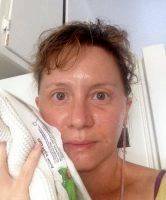
Incisions Are Made Above The Hairline
Tailor-made facelifts
It’s important to discuss with your plastic surgeon what your goals are. These include not only what kind of result you’re looking for but also how much down time you can afford. It’s also important that you deal with a plastic surgeon who’s experienced in treating different types of problems.
When I was a resident in the early 80s, there was basically one type of face-lift. Patients came in for a consultation and my professors would either say you’re ready for facelift or come back later.
We now see younger patients who are looking for little nips and tucks. Over the years, more extensive facelifts as well is less invasive facelifts have developed. Most patients are women and there are many more now in the workforce.

Mini Facelift Candidate
Some cannot afford 1-2 week “down time” with the traditional facelifts and will settle for a less complete results with a faster recovery time. There are other patients who don’t need a full facelift. Some may need a little liposuction and a little lift along the jawline.
With the advent of dermal fillers, we can add volume to the tissue which plumps the face up, as well as camouflages the skin laxity. Some patients need a multi-level approach with both surgical and nonsurgical procedures, including laser skin resurfacing.
Discuss the different treatment options with your plastic surgeon, to find out what’s best for you. (Joseph M. Perlman, MD, Houston Plastic Surgeon)
Many different types of face lifts that can fit your lifestyle
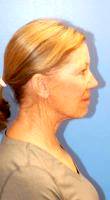
Mini Facelift Is A Less Invasive Alternative
The results from this can benefit some people but it is not for everyone. A mini lift can help some people but the results are not as dramatic. Some people might get disappointed in the results.
A mini lift can soften the jowls and neck area but if you really want a dramatic effect you will want someone to do the little extras to tighten all those areas for you. You get what you pay for many times. Some of the lifts that are being marketed out there are having doctors take shortcuts. Make sure to look at the specific doctors results and talk to their patients to see how happy they are.
Also, you shouldn’t think that mini lifts have way less recovery. Sometimes, they have just as much recovery as some of the more extensive lifts especially if some precautions are taken for the period after your procedure.
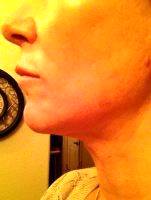
Mini Facelifts Are Best For Younger Patients
Consulting a Board Certified Facial Plastic Surgeon would be something that I recommend. We specialize in the face and are highly qualified to help you with this. (Philip Young, MD, Bellevue Facial Plastic Surgeon)
Your Goals, Your Anatomy, Your Surgeon
Both Physicians and Patients alike are asking and debating in offices and conferences across the country. With the advent of increasing surgical knowledge, so much marketing and consumer friendly terminology the information available to patients has gotten very confusing.
First lets define some basic terms to help answer your question. Mini-Face Lift: a surgical procedure where extra / sagging skin is removed and the SMAS/muscle layer may or may not be tightened, plicated or cut & sewn.
Typically indicated for early or mild signs of aging in the lower third of the face or for patients who have had a facelift in the past and need only a minor touchup as they age.

The Results Of A Full Facelift
Incisions are smaller and may be limited in location. Recovery is 5-10 days. May be done with local anesthesia or sedation. Full Facelift: a surgical procedure where extra / sagging skin is removed and the SMAS/muscle layer is always tightened, plicated, or cut & sewn.
Additionally deep plane lifts involve elevating the entire SMAS/muscle layers in specific areas and repositioning it.
Typically indicated for moderate to deep signs of aging in the lower third of the face or for patients undergoing a primary facelift and looking for longstanding and durable results.
Incisions are larger and usually extend from the front of the ear to the back and may even extend into the hairline. Recovery is 10 days to 3 weeks. Depending on the procedure may be done with local anesthesia, sedation or general anesthesia.

What Is A Full Facelift Photo
Both are good options but it is crucial that you completely and carefully assess your goals before sitting down with a Surgeon.
Once you have done this the next step is to sit down with a qualifed Surgeon and express your goals and to allow them to assess your anatomy and explain what options they are confident & experienced in performing which will help you attain your specific goals given your specific anatomy.
While cost and recovery time should be factored in, please do not allow them to be the main factors in your decision making.
Financing is widely available and by planning ahead for the required recovery time you can focus on the other factors discussed which are utlimately far more impactful on getting the results you are seeking. (Kamran Jafri, MD, New York Facial Plastic Surgeon)

Full Fecrlift Is Best For Patients Who Are Concerned About Loose Skin
Miniface lift vs facelift-Which is the best fit?
What may not be obvious is that the term minilift does not define a single procedure. Minilift may mean limited incisions (S-lift or short-scar facelift), limited dissection, skin only lift or lifting with SMAS plication (folding of the fascial layer under the skin for tightening) vs SMAS imbrication (SMAS elevation with advancement), the latter of which is commonly with more invasive facelifts often termed “full” facelifts.
Minilifts may be recommended for those with more mild aging changes that do not extend too far into the neck but primarily involve laxity along the jawline or minimally under the chin. With short scar lifts, in particular, if there is too much laxity in the mid to lower neck the results may be compromised in order to avoid skin bunching behind or below the ear or there can be too much vertical movement in front of the ear with bunching potentially in the upper cheek.

Pick The Procedure That Is Best For Both Your Personal Needs And Your Wallet
This is generally not acceptable just to avoid having to extend the incision behind the ear. The important thing is that the procedure is able to accomplish the patient’s goal and if that means extending the incision behind the ear, this should definitely be an option.
Skin lifts have very limited usefulness and may only apply for a tuckup procedure when a small amount of residual skin laxity is noted and lifting and redraping of the skin might be beneficial.
SMAS plication vs SMAS imbrication can both provide excellent lifting results but often there is a bias by the physician that the results are not as long lasting as with the plication technique.
This may come from personal experience although this has not been conclusively proven in clinical studies. In my practice, I do tend to prefer the SMAS imbrication for the traditional full facelift when there is more laxity but when I am doing a limited incision procedure or if the aging changes or more mild, the plication technique can give very satisfactory results.
Even a “full” facelift is not the same in every patient in that the extent of the dissection and the SMAS treatment can vary based on the individual needs. With any approach, volume loss, banding in the neck or excessive fatty tissue in the jowls or neck should be addressed as well.
This can obviously be very confusing to the patient so the important thing is that there is good communication with your physician to determine what type of “facelift” they are recommending and why chose one over the other.Your physician should be comfortable with offering the procedure that is optimally suited to address your needs rather than trying to “fit” a procedure that might not be the best. Remember, if all you have is a hammer, everything is going to look like a nail and qualified physicians will have a complete tool box. (Pamela Henderson, MD, Phoenix Facial Plastic Surgeon)
A mini face lift may be suitable for younger patients with less skin. The less extensive the procedure generally corresponds to less bruising and recovery.
However, if you do decide to have a Short scar face lift or MAC lift or Mini face lift, make sure you visit with a board certified plastic surgeon capable of addressing the deep layer or SMAS and not just tightening the skin to avoid the wind-swept look achieved at some of the quick cosmetic centers. (Ankit Desai, MD, Jacksonville Plastic Surgeon)

